

Book Review: The Human Element: Overcoming the Resistance That Awaits New Ideas by Loran Nordgren & David Schonthal By: Julia DeKorte -->
by Julia DeKorte | 29 Feb 2024
Book Reviews
Book Reviews | 29 Feb 2024
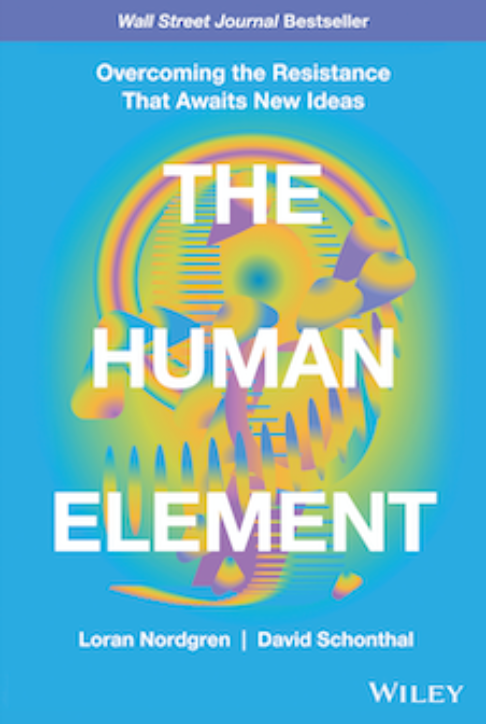
The Human Element: Overcoming the Resistance That Awaits New Ideas by Loran Nordgren and David Schonthal is all about what it takes to successfully introduce a new idea into the world. Nordgren and Schonthal bring in new perspectives that help visionaries to get the world to see what they see, and they do it in a pretty unusual way. Instead of educating readers on how to add value to a product, they dive into the four “frictions” operate against new ideas.
Friction #1: Inertia. Objects in motion stay in motion. I.E. People don’t like change. Many consumers find something they like and stick with it because it’s familiar. Even if it isn’t the best product on the market, or the most functional, or the newest, or any one of the qualifiers that make one product better than the other. That’s where you must start. Give your product something familiar, so your consumers don’t feel like they’re making a leap to something brand new.
Friction #2: Effort. The energy, real and perceived, needed to make change happen. Inventors must demonstrate how easy it is to implement the new approach, or idea, or product. Show that the cost of implementation is low but the rewards are so much more than you can imagine.
Friction #3: Emotion. The unintended negative emotions created by the very change we seek. Change can often cause anxiety, and it’s normal. But it’s also a reason why some people may not jump on board with new, unfamiliar ideas. Visionaries have to demonstrate that their new idea isn’t a threat.
Friction #4: Reactance. The impulse to resist being change. It’s a funny thing we do, isn’t it? Nordgren and Schonthal break down the science behind why humans are so resistant to change, and how inventors can use this fact to their advantage.
Of course, Nordfren and Schonthal get into the science behind each of these ideas, and how these ideas can help anyone who’s trying to show their idea to a greater audience. It’s a quick, interesting read and no matter what your idea or invention is, you’ll benefit from reading this book.
Loran Nordgren, Ph.D. is a Professor of Management and Organizations at the Kellogg School of Management. He teaches Leading Organizational Change, and also helps companies address their organization “misbehaviors” and helps turn things around. Some examples of companies he’s worked with? The Chicago Cubs, Central Intelligence Agency (CIA), and Allstate, to name a few.
David Schonthal is also a Professor at the Kellogg School of Management. He focuses on Innovation and Entrepreneurship, and teaches courses on Design Thinking, New Venture Creation, Creativity, Healthcare Startups, and Business Acquisition. He focuses on social psychology and how that plays into innovation. He’s also a Senior Director at IDEO, a design and innovation company, where he works with emerging businesses as well as older businesses that need a refresh.
There isn’t a more talented and tenured duo to write such a book!
This review has been adapted from The Human Element website.
Recent Blogs

Zipstring's Austin Hillam: Delivering Smiles of Wonderment one Person at a Time.
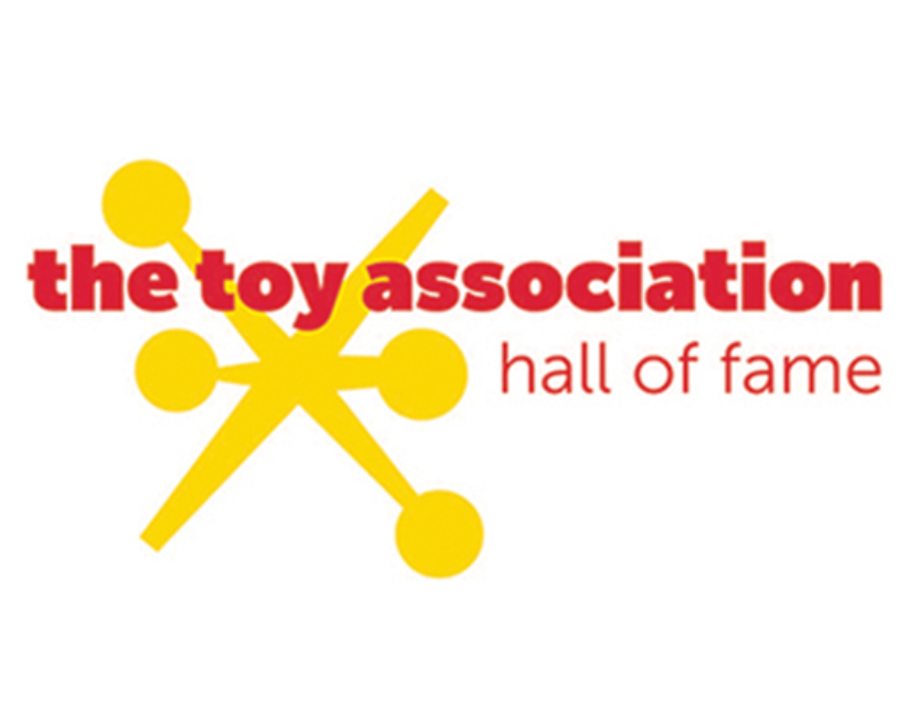
The Toy Association™ Inducts Seven Visionaries into The Toy Industry Hall of Fame

PEOPLE OF PLAY UNVEILS OFFICIAL EVENT LINE-UP FOR POP WEEK

TA's Joan Lawrence: Prioritizing Safe Play Every Day

Biographies and Interviews

Press Release

Industry Commentary, Op-Ed

Rob Yusim: Always Looking for the Next Great Innovation
Recent Wiki

INDUSTRY BASICS, HISTORY
SARASOTA TOY MUSEUM, SET TO OPEN IN AUGUST

TOMY INTERNATIONAL AND PARAMOUNT ANNOUNCE A CROWD-FUNDED STAR TREK™ U.S.S. ENTERPRISE NCC-1701 FROM THE FIRST MOTION PICTURE

Pam Mastrota: Join The Toy Foundation at “Party with a Purpose” to Bring Play to Children’s Hospitals
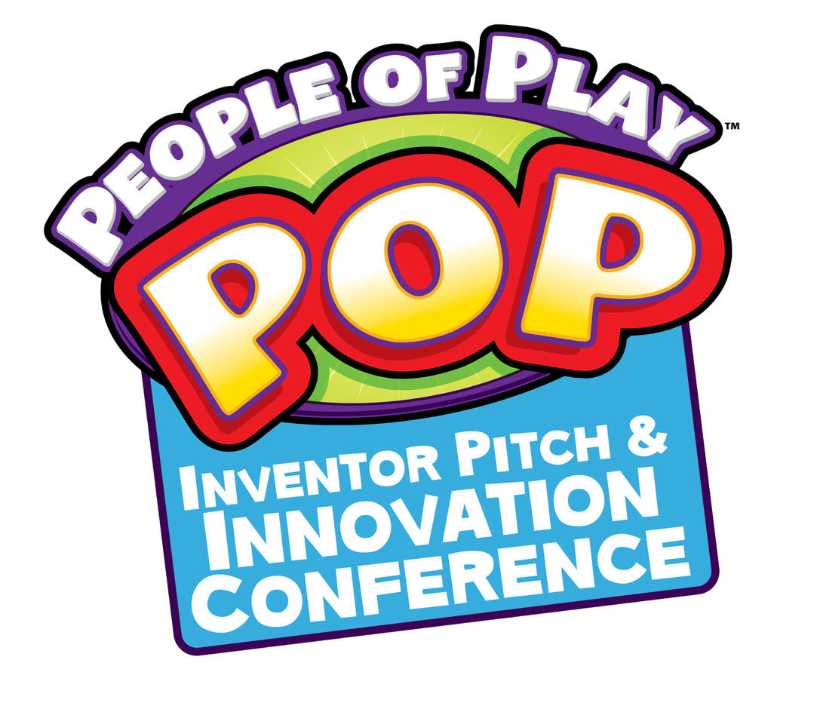
PITCHES: PRODUCT CONCEPTS FOR LICENSING & PRODUCTS FOR RETAIL
PEOPLE OF PLAY ANNOUNCES REGISTRATION IS OPEN FOR THE WORLD’S LARGEST AND LONGEST RUNNING TOY & GAME INVENTOR PITCH & INNOVATION CONFERENCE
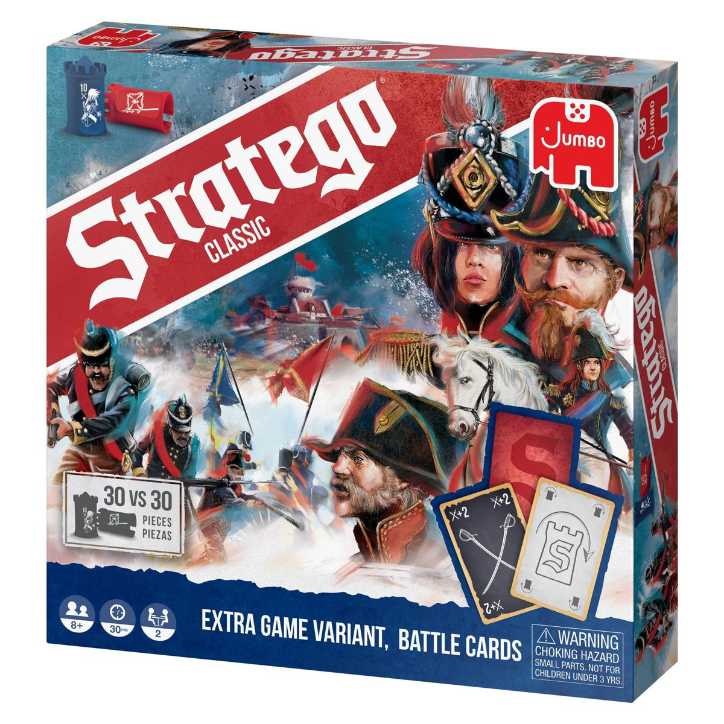
BOOK REVIEWS
Game Review: Stratego
POP's Got Talent

POP Entertainment
Randy Klimpert Shares his Ukulele Collection

Steve Casino Peanut Art

Everyone's Talking about POP!

Princess Etch - a Multi-Talented Etch A Sketch Artist

Joseph Herscher of Joseph' s Machines.
Recent POPcast

Hidden Role: The Brains Behind your Favorite Games
Connie Vogelmann designed Apiary & Wyrmspan!

Bob Fuhrer... Is THE Crocodile Dentist!

Tom Dusenberry... Bought Atari, Wizards of the Coast, and Avalon Hill!

Matt Leacock created Pandemic... the game!

Scott Brown and Tim Swindle... are Launching a New Sport!

POPDuos: Interviews with Legends and Leaders
POPDuo: Richard Dickson, Mattel’s President & COO, and Kedar Narayan, Young Inventor Challenge AMB

POPDuo: Will Shortz and Josh Wardle

POPDuos: Legends and Leaders Explore Creativity
POP Duo: Elan Lee, Co-Founder, Exploding Kittens.and Jeff Probst, Host and Exec Producer, Survivor

POP Duo: David Fuhrer, MNG Director, Blue Sq Innovations & Shawn Green, past Dodgers & Mets MLB Star

POP Duo: Bob Fuhrer, Founder, Nextoy and Tom Fazio, Golf Course Designer
Featured Articles

The Bloom Report
Toy Inventors--The Heart and Soul of the Industry

Brian Turtle: 'Endless' Stories, Advice, Kevin Bacon and More! tBR Person of the Week

Jonathan Levy on Jon2.0 - from Co-Founding Mastermind Toys to Spin Master

Andrew Perlmutter's Journey from Glencoe to Funko with Crazy Ideas that turned out Golden
Featured Innovators

Peggy Brown

Leslie Scott
Tait & Lily, Inventors of Betcha Can't!

Keep Trying and Don't be Afraid to Make Mistakes
Stay up to date with the latest news on toys & games!
- Be the first to here about new toy movie releases.
- Get alerts of new product releases
- Meet the inventors behind your favorite toys & games
- Rate and review your favorite toys
Already a member? Login here
Choose The Profile Type
Become an pop pro member today.
Get access to the essential resource for the toy, game and play industry
Find Contacts & Representation
Use our Advanced Search functionalities in the industry's largest database.
Showcase Yourself & Find Jobs
Manage your profile, message people to partner with, and find jobs.
Stay In the Loop
Follow the most comprehensive industry calendar, participate in exclusive networking sessions in the POP Pub, and more!
* Already a Member? Log In
How would you like to use getAbstract?
We help you to meet your learning objectives. getAbstract offers a free trial to qualifying organizations that want to empower their workforce with curated expert knowledge.
Enjoy 3 days of full online access to 25,000+ summaries Risk-free: no credit card is required. After three days, your trial will expire automatically.
Join getAbstract to access the summary!
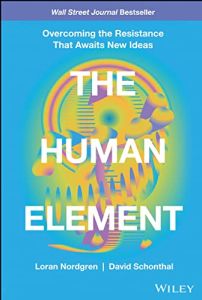
Loran Nordgren and David Schonthal
The human element, overcoming the resistance that awaits new ideas.
Wiley , 2021
What's inside?
Identify – and overcome – the frictions that hamper change and innovation.
Instant access to over 27,000 book summaries
For yourself.
Discover your next favorite book with getAbstract.
For your company
Stay up-to-date with emerging trends in less time.
We're committed to helping #nextgenleaders .
Already a customer? Log in here .
- French Français
Editorial Rating
The rating – what does it mean.
At getAbstract, we summarize books* that help people understand the world and make it better. Whatever we select for our library has to excel in one or the other of these two core criteria:
Enlightening – You’ll learn things that will inform and improve your decisions.
Helpful – You’ll take-away practical advice that will help you get better at what you do.
We rate each piece of content on a scale of 1–10 with regard to these two core criteria. Our rating helps you sort the titles on your reading list from solid (5) to brilliant (10). Books we rate below 5 won’t be summarized. Here's what the ratings mean:
10 – Brilliant. A helpful and/or enlightening book that, in addition to meeting the highest standards in all pertinent aspects, stands out even among the best. Often an instant classic and must-read for everyone. 9 – Superb. A helpful and/or enlightening book that is extremely well rounded, has many strengths and no shortcomings worth mentioning. 8 – Very good. A helpful and/or enlightening book that has a substantial number of outstanding qualities without excelling across the board, e.g. presents the latest findings in a topical field and is written by a renowned expert but lacks a bit in style. 7 – Good. A helpful and/or enlightening book that combines two or more noteworthy strengths, e.g. contains uncommonly novel ideas and presents them in an engaging manner. 6 – Notable. A helpful and/or enlightening book that stands out by at least one aspect, e.g. is particularly well structured. 5 – Solid. A helpful and/or enlightening book, in spite of its obvious shortcomings. For instance, it may offer decent advice in some areas while being repetitive or unremarkable in others.
*getAbstract is summarizing much more than books. We look at every kind of content that may matter to our audience: books, but also articles, reports, videos and podcasts. What we say here about books applies to all formats we cover.
- Eye Opening
- Concrete Examples
While the rating tells you how good a book is according to our two core criteria, it says nothing about its particular defining features. Therefore, we use a set of 20 qualities to characterize each book by its strengths:
Applicable – You’ll get advice that can be directly applied in the workplace or in everyday situations. Analytical – You’ll understand the inner workings of the subject matter. Background – You’ll get contextual knowledge as a frame for informed action or analysis. Bold – You’ll find arguments that may break with predominant views. Comprehensive – You’ll find every aspect of the subject matter covered. Concrete Examples – You’ll get practical advice illustrated with examples of real-world applications or anecdotes. Controversial – You’ll be confronted with strongly debated opinions. Eloquent – You’ll enjoy a masterfully written or presented text. Engaging – You’ll read or watch this all the way through the end. Eye opening – You’ll be offered highly surprising insights. For beginners – You’ll find this to be a good primer if you’re a learner with little or no prior experience/knowledge. For experts – You’ll get the higher-level knowledge/instructions you need as an expert. Hot Topic – You’ll find yourself in the middle of a highly debated issue. Innovative – You can expect some truly fresh ideas and insights on brand-new products or trends. Insider’s take – You’ll have the privilege of learning from someone who knows her or his topic inside-out. Inspiring – You’ll want to put into practice what you’ve read immediately. Overview – You’ll get a broad treatment of the subject matter, mentioning all its major aspects. Scientific – You’ll get facts and figures grounded in scientific research. Visionary – You’ll get a glimpse of the future and what it might mean for you. Well structured – You’ll find this to be particularly well organized to support its reception or application.
Recommendation
The road to progress – and business success – is littered with failures: evidence of the forces that can wreck even the most promising innovations and business models. To help leaders, entrepreneurs and other change-makers maximize their impact, management experts Loran Nordgren and David Schonthal offer an examination of the subtle reasons why many good ideas and ventures fail. Psychological research and case studies add heft to this clear, commonsense study of frequently overlooked impediments. It serves as a valuable addition to the management bookshelf.
Four types of friction can sabotage change and innovation.
When innovators and change-makers try to promote their products and ideas, they tend to focus on the benefits of embracing them. And they often fail. People resist embracing new things for four basic reasons: first, inertia; second, the effort required to make a change; third, emotional responses; and fourth, reactance – the backlash that can happen when a person feels pressured. These four sources of friction correspond to the four basic elements of innovation: the extent of change it introduces, the costs it imposes, the audience’s response and the innovator’s approach to introducing the idea.
Think of the benefits of a change or innovation, as well as the costs and risks of not adopting it, as fuel: They drive an innovation or offering forward. Fuel works because it highlights the reasons to make a change or embrace an offering. But fuel has limitations, and it loses power when it encounters humans’ sensitivity to costs and negativity bias – the propensity to give negative things more weight than positive ones. Regardless of the benefits of a choice, even a small amount of negatives can cause people to turn...

About the Authors
Loran Nordgren , a professor of management and organizations at the Kellogg School of Management, studies the psychological processes underlying how people think and act. David Schonthal , a professor of strategy, innovation and entrepreneurship at Kellogg, teaches new venture creation, design thinking, health care innovation and creativity.
My Highlights
Are you sure you want to remove the highlight?
Comment on this summary
Learners who read this summary also read.

Related Channels

Couldn't load component 'GaTopLayer'.

- Kindle Store
- Kindle eBooks
- Business & Money

Promotions apply when you purchase
These promotions will be applied to this item:
Some promotions may be combined; others are not eligible to be combined with other offers. For details, please see the Terms & Conditions associated with these promotions.
Audiobook Price: $15.04 $15.04
Save: $7.55 $7.55 (50%)
- Highlight, take notes, and search in the book
- In this edition, page numbers are just like the physical edition
Buy for others
Buying and sending ebooks to others.
- Select quantity
- Buy and send eBooks
- Recipients can read on any device
These ebooks can only be redeemed by recipients in the US. Redemption links and eBooks cannot be resold.

Download the free Kindle app and start reading Kindle books instantly on your smartphone, tablet, or computer - no Kindle device required .
Read instantly on your browser with Kindle for Web.
Using your mobile phone camera - scan the code below and download the Kindle app.

Image Unavailable

- To view this video download Flash Player
Follow the authors

The Human Element: Overcoming the Resistance That Awaits New Ideas 1st Edition, Kindle Edition
Wall Street Journal bestseller Watch your most innovative ideas take flight by overcoming the forces that resist change
The Human Element is for anyone who wants to introduce a new idea or innovation into the world. Most marketers, innovators, executives, activists, or anyone else in the business of creating change, operate on a deep assumption. It is the belief that the best (and perhaps only) way to convince people to embrace a new idea is to heighten the appeal of the idea itself. We instinctively believe that if we add enough value, people will eventually say "yes." This reflex leads us down a path of adding features and benefits to our ideas or increasing the sizzle of our messaging - all in the hope of getting others on board. We call this instinct the "Fuel-based mindset." The Fuel-based mindset explains so much of what we do, from adding countless trivial features to software, to bolting a sixth blade onto a shaving razor.
By focusing on Fuel, innovators neglect the other half of the equation – the psychological Frictions that oppose change. Frictions create drag on innovation. And though they are rarely considered, overcoming these Frictions is essential for bringing new ideas into the world. The Human Element highlights the four Frictions that operate against innovation. Readers will discover:
- Why their best ideas and initiatives often get rejected – despite their undeniable value
- How to disarm the forces of resistance that act against change
- How to transform the very Frictions that hold us back into catalysts for change
Perfect for business leaders, product managers, educators, and anyone else who seeks to bring new and exciting ideas to life, The Human Element is an indispensable resource to help people overcome the powerful forces of human nature that instinctively resist change.
- ISBN-13 978-1119765042
- Edition 1st
- Publisher Wiley
- Publication date September 28, 2021
- Language English
- File size 5316 KB
- See all details
Kindle E-Readers
- Kindle Paperwhite
- Kindle Paperwhite (5th Generation)
- Kindle Touch
- Kindle Voyage
- Kindle Oasis
- All new Kindle paperwhite
- All New Kindle E-reader
- Kindle Oasis (9th Generation)
- Kindle Paperwhite (10th Generation)
- Kindle Paperwhite (11th Generation)
- All New Kindle E-reader (11th Generation)
- Kindle Scribe (1st Generation)
- Kindle (10th Generation)
- Kindle Oasis (10th Generation)
Fire Tablets
- Fire HD 8 (8th Generation)
- Fire 7 (9th Generation)
- Fire HD 10 (9th Generation)
- Fire HD 8 (10th Generation)
- Fire HD 10 (11th Generation)
- Fire HD 10 Plus
- Fire 7 (12th Generation)
- Fire HD 8 (12th Generation)
- Fire HD 8 Plus
Free Kindle Reading Apps
- Kindle for Android Phones
- Kindle for Android Tablets
- Kindle for iPhone
- Kindle for iPad
- Kindle for Mac
- Kindle for PC
- Kindle for Web
Customers who bought this item also bought

Editorial Reviews
"An engrossing read on what it takes to open other people's minds. A leading psychologist and a crackerjack entrepreneur team up to demystify the science and practice of convincing people to let go of the status quo. If you've ever been frustrated by people rejecting an innovative idea or refusing a constructive change, this book might just be what you need." -- Adam Grant , #1 New York Times bestselling author of Think Again and host of the TED podcast WorkLife " The Human Element pulls back the curtain on the psychological forces that stop people from embracing new ideas and adopting new products. Whether you're a creator looking to execute or an executive looking to create, this book is a timely read." -- Daniel H. Pink , Author of When, Drive, and To Sell Is Human "Why is it that customers looking at new products or services that would dramatically change their lives or business for the better find it so hard to embrace and adopt them? The Human Element cracks the code. It describes the four forces that act against innovation and provides entrepreneurs the insights and tools on how to overcome them. This book is essential reading for any entrepreneur or innovator looking to accelerate adoption of disruptive innovation." -- Steve Blank , Eight-time entrepreneur-turned-educator and originator of the Lean Startup movement
"Too often marketers rely on features, benefits and promotion as the way to get customers to adopt a new product or service. But as it turns out, this is only half of the marketing formula. The Human Element makes a critical contribution to the world of marketing by identifying the four primary Frictions that inhibit consumers' desires to adopt new offers. This book shows readers not only how to forecast these Frictions, but more importantly, how to overcome them. The Human Element is a must read for anyone attempting to launch something new." -- Philip Kotler , "The Father of Modern Marketing", Author of over 80 books and Professor Emeritus at the Kellogg School of Management
"Adoption of your products and services is key to innovation success. Let this book be your guide." -- Alex Osterwalder , Innovation Thought Leader, Best-selling author of Business Model Generation and originator of the Business Model Canvas
"What invisible forces slow or stall even our best innovation efforts? Schonthal and Nordgren identify four "Frictions" that get in the way, and then tell us how to overcome them. The Human Element is full of insights for designers, innovators, and executives alike." -- Tom Kelley , 3-time, Best-selling author of the Ten Faces of Innovation , The Art of Innovation and Creative Confidence
"Thank heavens for friction--it makes driving possible. But when traveling on the innovation superhighway, friction is stifling. In The Human Element , Nordgren and Schonthal argue that although a bigger engine can promote creativity, friction-reduction is the secret ingredient. This beautiful, elegant book is the essential tour guide for those of us seeking to develop creative and influential ideas." -- Eli Finkel , Best-selling author of the All or Nothing Marriage and Professor at Northwesten University
"Innovation often connotes cutting-edge, advanced, or feature-rich. In this book, however Schonthal and Nordgren make the case that, after all is said and done, innovation is simply about helping people. The authors provide paradigm shifting frameworks that will help managers and entrepreneurs improve their odds of success." - -Efosa Ojomo , Author of The Prosperity Paradox: How Innovation Can Lift Nations Out of Poverty and leader of the Global Prosperity research group at the Clayton Christensen Institute for Disruptive Innovation
"There's always something standing between ourselves and innovation: an overwhelming and very human resistance to change. The insights Loran Nordgren and David Schonthal surface are important reminders of the care and attention designers need to bring a new idea to life and to build our shared future." -- Sandy Speicher , CEO of IDEO
"A revolutionary approach to bringing new ideas to life. Insightful and engaging, this is a must read for anyone who want to successfully launch a project, a product or an idea." -- Francesca Gino , Award-winning Harvard Business School professor, innovation expert, and author of Rebel Talent: Why It Pays to Break the Rules at Work and Life
"The ability to elegantly overcome Friction is one of the most crucial skills an innovator can possess. The problem is, most don't know how to do it! The Human Element finally reveals why we're all wired to resist new ideas, and provides intuitive tools and methods to insure that even the most cutting-edge innovations are enthusiastically received." -- Bob Moesta , Author, educator, and originator of the "Jobs-To-Be-Done" approach to innovation and marketing
"Nordgren and Schonthal offer a revolutionary and profound approach to getting new ideas embraced: Don't follow the conventional path of intensifying your persuasion; instead focus on reducing the friction that fuels resistance. The ideas are eye-opening and the writing is eye-pleasing, elegantly combining fascinating examples with scientific insights. The writing itself personifies the very message of The Human Element : it is all fuel, no friction." -- Adam Galinsky , Professor at Columbia Business School, co-author of the best-selling book, Friend & Foe , and a popular TED speaker
"Friction Theory is a powerful framework for understanding user behavior. A must read for every product designer." -- Andy MacMillan , Founder and CEO of UserTesting
"Contrary to popular belief, innovations rarely succeed because they are chalk-full of features. This book makes a strong case for forever dispelling this view in favor of a laser-like focus on knocking down the barriers that keep customers from beating a pathway to your door. If you want a new way of thinking about these sources of friction--and more importantly, what to do when you encounter them--you should read this book. It will give you a valuable recipe for how to design and introduce innovations that are a good bet for success in the marketplace." -- Christine Mooreman , T. Austin Finch Sr. Professor of Business Administration, Fuqua School of Business, Duke University, Editor-in-Chief, Journal of Marketing
" The Human Element underscores the crucial role that empathy plays in innovation and change. It's not enough to talk about it, one must internalize it in order to have the impact they desire. David and Loran will show you how." -- Maelle Gavet , Best-selling author of Trampled by Unicorns and CEO of TechStars
From the Inside Flap
As businesspeople, inventors, and managers know all too well, convincing people to adopt a new idea or behavior is only partly about the innovation itself. Successful changemakers learn that they have to overcome the deeply rooted Frictions that oppose the very nature of change.
Perfect for anyone trying to introduce a new idea or innovation into the world, The Human Element: Overcoming the Resistance That Awaits New Ideas belongs in the libraries of marketers, innovators, executives, activists, and others who hope to change the way anyone does anything.
From the Back Cover
Praise for THE HUMAN ELEMENT
"An engrossing read on what it takes to open other people's minds. A leading psychologist and a crackerjack entrepreneur team up to demystify the science and practice of convincing people to let go of the status quo. If you've ever been frustrated by people rejecting an innovative idea or refusing a constructive change, this book might just be what you need." --Adam Grant, #1 New York Times bestselling author of Think Again and host of the TED podcast WorkLife
"There's always something standing between ourselves and innovation: an overwhelming and very human resistance to change. The insights Loran Nordgren and David Schonthal surface are important reminders of the care and attention designers need to bring a new idea to life and to build our shared future." ---Sandy Speicher, CEO of IDEO
"Why is it that customers looking at new products or services that would dramatically change their lives or business for the better find it so hard to embrace and adopt them? The Human Element cracks the code. It describes the four forces that act against innovation and provides entrepreneurs the insights and tools on how to overcome them. This book is essential reading for any entrepreneur or innovator looking to accelerate adoption of disruptive innovation." --Steve Blank, Eight-time entrepreneur-turned-educator and originator of the Lean Startup movement
"What invisible forces slow or stall even our best innovation efforts? Schonthal and Nordgren identify four 'Frictions' that get in the way, and then tell us how to overcome them. The Human Element is full of insights for designers, innovators, and executives alike." --Tom Kelley, Three-time bestselling author of Ten Faces of Innovation, The Art of Innovation, and Creative Confidenc
" The Human Element pulls back the curtain on the psychological forces that stop people from embracing new ideas and adopting new products. Whether you're a creator looking to execute or an executive looking to create, this book is a timely read." --Daniel H. Pink, Author of When, Drive, and To Sell Is Human
About the Author
Product details.
- ASIN : B09HJH6LFX
- Publisher : Wiley; 1st edition (September 28, 2021)
- Publication date : September 28, 2021
- Language : English
- File size : 5316 KB
- Text-to-Speech : Enabled
- Screen Reader : Supported
- Enhanced typesetting : Enabled
- X-Ray : Not Enabled
- Word Wise : Enabled
- Print length : 231 pages
- #74 in Small Business Sales & Selling
- #107 in Marketing for Small Businesses
- #131 in Business Technology Innovation
About the authors
David schonthal.
David Schonthal is a Clinical Professor of Innovation & Entrepreneurship at Northwestern University's Kellogg School of Management, where he teaches courses in new venture creation, design thinking, business acquisition, healthcare entrepreneurship, corporate innovation and creativity.He is also a Senior Director of Business Design at IDEO where helps organizations build and launch new ventures, design transformational new business models, and establish novel go-to-market strategies for products and services.
David also serves as an Operating Partner at 7Wire Ventures, a healthcare technology-focused venture capital firm, and a Global Advisor at Design for Ventures (D4V), a Tokyo-based early-stage venture capital fund that invests in design-led Japanese startups.
He is a co-founder of MATTER, a 25,000-square-foot innovation center in downtown Chicago focused on catalyzing and supporting healthcare entrepreneurship. He is a contributing writer to Forbes, Inc., Fortune and HBR magazines, authoring articles on corporate entrepreneurship, innovation and business design.
If all else fails, David's Plan B is to use his booming baritone to break into the lucrative voiceover world.
Loran Nordgren
Loran Nordgren is a Professor of Management and Organizations at the Kellogg School of Management. His research and teaching explores the psychological forces that propel and prevent the adoption of new ideas. Loran has received numerous awards for research and teaching, and has worked with companies throughout the world on a wide-range of behavior change problems, a process he calls Behavioral Design.
Customer reviews
- 5 star 4 star 3 star 2 star 1 star 5 star 85% 10% 4% 1% 1% 85%
- 5 star 4 star 3 star 2 star 1 star 4 star 85% 10% 4% 1% 1% 10%
- 5 star 4 star 3 star 2 star 1 star 3 star 85% 10% 4% 1% 1% 4%
- 5 star 4 star 3 star 2 star 1 star 2 star 85% 10% 4% 1% 1% 1%
- 5 star 4 star 3 star 2 star 1 star 1 star 85% 10% 4% 1% 1% 1%
Customer Reviews, including Product Star Ratings help customers to learn more about the product and decide whether it is the right product for them.
To calculate the overall star rating and percentage breakdown by star, we don’t use a simple average. Instead, our system considers things like how recent a review is and if the reviewer bought the item on Amazon. It also analyzed reviews to verify trustworthiness.
Customers say
Customers find the book provides great insights, practical, and real-world applications. They describe it as a fantastic, fun, and compelling read. Readers also mention the authors avoid jargon and make all feel welcome.
AI-generated from the text of customer reviews
Customers find the book provides great insights on not only how to get people, but also practical and real-world applications into achieving success. They say the ideas are grounded in research from the behavioral and organizational sciences. Readers mention the book is well-researched and thought-provoking. They appreciate the engaging real-life examples and case studies woven throughout.
"...and practical applications team up to make this read both engaging and useful . Perfect for anyone looking to drive change effectively...." Read more
"...It packs an intense amount of practical and real world applications into achieving success in so many aspects of life...." Read more
"...With engaging real-life examples and case studies woven throughout, the pages almost turn themselves!..." Read more
"...The authors have a very approachable style of writing and their examples are excellent ...." Read more
Customers find the book fantastic, fun, and compelling. They say it's well-written, relatable, and memorable.
"...The stories are relatable and memorable ...." Read more
"This compelling and easily-digestible business/innovation book convincingly argues that removing obstacles (friction) to new ideas can be more..." Read more
"...Still worth the read ." Read more
"I found the concepts this book introduces to be very interesting and timely...." Read more
Customers find the book easy to read, approachable, and accessible. They appreciate the authors' jargon-free writing style and interesting concepts.
"...The style is incredibly accessible as the authors avoid jargon to make all feel welcome in the learnings...." Read more
"...The authors have a very approachable style of writing and their examples are excellent...." Read more
"Heard about this on NPR’s hidden brain. Easy to read . Examples make the concepts easy to understand." Read more
"...Their ideas were well-written, easy to read and really helped me gain some new insights to help challenge resistant students to reach a better level..." Read more
Reviews with images

Very insightful

- Sort reviews by Top reviews Most recent Top reviews
Top reviews from the United States
There was a problem filtering reviews right now. please try again later..
Top reviews from other countries
Report an issue
- Amazon Newsletter
- About Amazon
- Accessibility
- Sustainability
- Press Center
- Investor Relations
- Amazon Devices
- Amazon Science
- Sell on Amazon
- Sell apps on Amazon
- Supply to Amazon
- Protect & Build Your Brand
- Become an Affiliate
- Become a Delivery Driver
- Start a Package Delivery Business
- Advertise Your Products
- Self-Publish with Us
- Become an Amazon Hub Partner
- › See More Ways to Make Money
- Amazon Visa
- Amazon Store Card
- Amazon Secured Card
- Amazon Business Card
- Shop with Points
- Credit Card Marketplace
- Reload Your Balance
- Amazon Currency Converter
- Your Account
- Your Orders
- Shipping Rates & Policies
- Amazon Prime
- Returns & Replacements
- Manage Your Content and Devices
- Recalls and Product Safety Alerts
- Registry & Gift List
- Conditions of Use
- Privacy Notice
- Consumer Health Data Privacy Disclosure
- Your Ads Privacy Choices

Related Articles

Book Review: The Human Element
The human element, by david boyle.
Review by Neil Foster
The Human Element aims to challenge assumptions to improving organisations. It is not a textbook or even a handbook but reads like the product of hundreds of different and stimulating conversations. What shines out from the first page is the author’s unflinching belief in people’s capacity to improve organisations, services and experiences for people. However, to achieve this, people have to be at the heart of design and their interests must override traditional habits or justifications on the grinding grounds of ‘efficiency’.
David Boyle’s faith in humanity is unshakeable and allows him to jump from a variety of settings in a unfettered manner from Horatio Nelson’s leadership culture to school class sizes. The theme is straightforward – that human relationships are critical to any successful organisation and the challenge is to enable these to flourish.
Boyle rightly challenges assumptions. He reminds us that you cannot have innovation without error, that increasingly personality is more important than qualifications. Organisations need to build better emotional relationships with their customers and learn how to reject the rulebook and avoid becoming tangled in targets. He guards against businesses empire building and community organisations falling under the spell of grant funding and displacing networks and self-help groups.
His greatest contempt is for the McKinseyite addiction to measuring and target setting which he believes distorts human behaviour and thoroughly disempowers staff. Boyle warns against the quick fix of 21st century culture, saying ‘we are relying on systems more and more, and increasingly removing the human element that makes change possible’.
There are some under-explored issues resulting from the book’s arguments that would have been welcome. The contracting-out of public services restricts the freedom and innovation Boyle evangelises. I sense Boyle wants an empowered and enlightened public sector, rejecting the marketisation agenda and instead always engaging and seeking to act as a local change maker instead. This would be a powerful vision, but one not explicitly made.
Boyle’s arguments against empire building are powerfully put, but he doesn’t appear to accept that there are times when regulation is needed in order to ensure the likes of Tesco don’t override local interests and ‘human scale’ competitors. The business leaders quoted in The Human Element may have a neat turn of phrase, but at times feels top-heavy for a book aiming to highlight the importance of people power and limitations of hierarchy.
The People Principle should be right for these times. Boyle asks if we are trying to ‘ride dead horses’ and will changing riders really do? The critical eye towards the services we use, shape and fund is a message that should resonate in a time of spending cuts. The nagging irony may be that at a time when we need to reform and redesign services the most, we’re also facing the greatest insecurity at work and in society as a whole. The tendency to ‘cling to nurse for fear of something worse’ could be will be a barrier to some deploying some of the ideas and vision behind The Human Element. Perhaps that is why Boyle’s focus on leadership is just so important.
A major strength of the book features a strong bibliography at the end of each chapter which enables the read to delve deeper into the areas and arguments that hook. The Human Element is a potent gateway drug into design thinking, organisational change and a better understanding what motivates (and demotivates) people. It will whet the appetite, provoke discussion and open eyes. A book to be read and shared.
- Read our profile of the author David Boyle here
Subscribe to our newsletter

IMAGES
VIDEO
COMMENTS
The Human Element makes a critical contribution to the world of marketing by identifying the four primary Frictions that inhibit consumers' desires to adopt new offers. …
The Human Element: Overcoming the Resistance That Awaits New Ideas by Loran Nordgren and David Schonthal is all about what it takes to successfully introduce a new idea into the world.
Organizational psychologist Loran Nordgren discusses his book "The Human Element: Overcoming the Resistance That Awaits New Ideas", co-authored by David Schonthal, which is a...
A magnum opus on the human impact on our planet—from the threat of animal extinction to catastrophic wildfires, global warming as visualized through glacier melt, and …
John Wiley & Sons, Oct 5, 2021 - Business & Economics - 256 pages. Wall Street Journal bestseller. Watch your most innovative ideas take flight by overcoming the forces that resist …
Access a free summary of The Human Element, by Loran Nordgren and David Schonthal and 27,000 other business, leadership and nonfiction books on getAbstract.
The Human Element makes a critical contribution to the world of marketing by identifying the four primary Frictions that inhibit consumers' desires to adopt new offers. …
The Human Element is a new book by Loran Nordgren and David Schonthal about overcoming people's resistance to new ideas. Coming to bookstores October 5, 2021.
The Human Element aims to challenge assumptions to improving organisations. It is not a textbook or even a handbook but reads like the product of hundreds of different and stimulating …